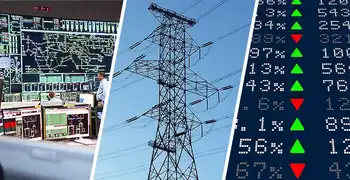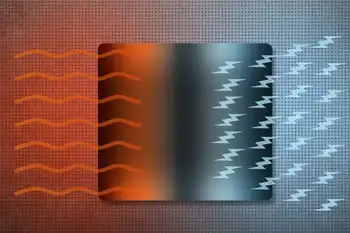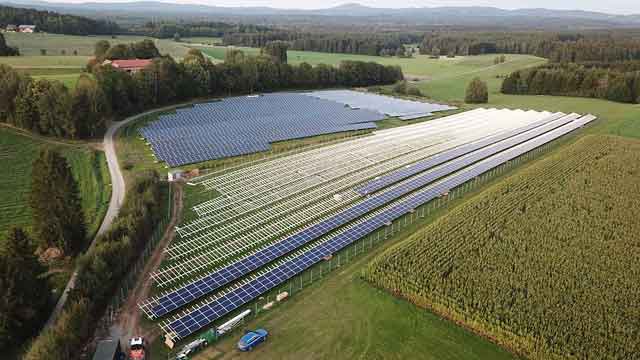First ‘on-grid’ alternative-energy cell sites on horizon
Where electricity is plentiful and access readily available — namely the developed world — operators have always opted to eschew alternative energy solutions in favor of hooking into the electrical grid.
But Alcatel-Lucent’s Frederic Wauquiez believes the industry is approaching an inflection point on green energy — one where the return on investment for alternative energy-powered cellsites matches that of electrically powered cell sites, which could prompt a new wave of solar-and wind-powered base stations, even in areas where an electrical connection is available.
As the cost of traditional energy increases, the price of green technology falls and networks become more efficient, using alternative energy to provide all or part of the energy at cell sites is becoming less prohibitive, said Wauquiez, marketing director of the green wireless solutions group at Alcatel-Lucent and project manager for the vendorÂ’s Alternative Energy Program.
Alcatel-Lucent has been working with alternative energy in wireless for five years, but it has largely been a niche solution. To date, Alcatel-Lucent has deployed only 300 sites, mainly in Africa and the Middle East, which rely entirely on alternate fuels. But in the last year, there has been a surge in interest in those technologies, primarily from operators in those same regions looking to avoid the enormous costs of transporting diesel to their remote cell sites but also unexpectedly from customers in mature industrial regions in the Americas, Europe and Asia.
“At the end of last year, we realized that this market will be accelerating quite quickly, but not just in rural areas of emerging markets,” Wauquiez said. “Much sooner than we expected, we’re seeing interest from customers in on-grid situations, where they have access to electricity.”
Their interest has been piqued by simple economics.
Electricity is a large part of an operator’s operational budget as it feeds massive quantities of power to a highly distributed network of cell sites to support not just the base station power amplifiers and radios on-site but also the air-conditioning units necessary to power them. The increase in energy costs is being largely offset with the increased power efficiencies of most vendors’ equipment. The huge site cabinets are being replaced with compact modular base stations, which not only consume less power — the current generation of equipment has cut power consumption between one-third and one-half — but also require far less cooling. Many new radio systems also are coming equipped with energy-saving software, which powers down the base station during non-peak hours or when relatively few customers are on the cell.
But those energy efficiencies may serve to promote green energy sooner rather than push it off to a later date. By reducing the number of kilowatt hours consumed by the site, solar and wind solutions suddenly become more feasible as less power-generating infrastructure is required to power the site, Wauquiez said. Furthermore as the market for alternative energy solutions grows in other industries the cost of the technology goes down for telecom, sending the price of solar panels and wind turbines down.
Combining those trends with regulatory and political environments favorable toward green energy — such as the cap and trade emissions program proposed in the U.S. — the economics of off-grid power at the cell site start comparing to the economics of on-grid sites, Wauquiez said.
“As soon as 2010, there will be some good return on investment cases for alternative energy at the cell site,” Wauquiez said. “What we are sure of is next year there will be big rollouts in the emerging markets. We didn’t think that would also be the case for developed markets, but we may see some operators roll out alternative energy sites in 2010.”
A lot has to be done before those volume rollouts can occur, though, primarily optimizing green energy solutions designed for other industries for the specific needs of wireless, Wauquiez said. Alcatel-Lucent launched its Alternative Energy Program in February with the objective of tailoring solar, wind and fuel-cell technology for wireless cell sites, creating a mass-produced solution that can scale to 100,000 sites by 2012. In June, Alcatel-Lucent opened up an energy lab in France where it is now running pilot networks using such technologies.
Building alternative energy-fed networks involves much more than slapping solar panels on the side of a tower, Wauquiez said. New site planning techniques are key since arrays of solar panels and turbine masts have much larger and varied footprints. The site would require new power control and remote capabilities to deal with fluctuations in the power source resulting from changes in weather as well as the management of multiple power sources on the same site. Back-up power will become critical as solar cells go off line when the sun sets or wind turbines stop spinning when the breeze dies.
Perhaps most significant, Alcatel-Lucent must draw on the vast range of alternative energy products originally designed for completely different industries and configure them for wireless use, Wauquiez said.
“The solar panel market is exploding, but the solar panels and equipment you put on the roof of your house may not be the right size or capacity necessary for a cell site,” Wauquiez said. “We’re doing the job of going to the market and applying the right technologies for telecom.”
The same goes for wind energy. Right now, a wind-powered cell site essentially requires two towers, the mast for the antennas and a separate spire on which to mount a turbine. Optimally, a wind turbine can be incorporated into the tower itself, a design Alcatel-Lucent is currently developing. ItÂ’s also investigating ways solar panels could be optimized for the unique topology of the tower and batteries can be buried underground to keep them cool, Wauquiez said.
Wauquiez doesnÂ’t expect there to be sudden explosion of U.S. or European operators putting up wind turbines and solar panels in big cities, but he believes that there will be gradual transition among operators to mixed-use solutions. One of the key advantages to using alternative energy in areas that are on-grid is an operator can still utilize centralized power even if it is no longer the primary energy source.
That approach simply reverses the equation rather than use the grid as the primary source and a localized solution — such as generators or batteries — as a back-up, alternative energy could become the primary source and the grid a back-up or supplemental source, Wauquiez said.
In areas where no grid is available, operators are forced to build power networks for the worst-case scenario. “You might have to deploy solar panels cover 100 square meters just because a few days out of the year might be sunny,” Wauquiez said. But if an operator can draw on the grid at night or during bad weather, it could reduce that solar footprint to 50 square meters, he said.
Wauquiez predicted that operators in the developed world will deploy alternative energy solutions at cell sites in three stages.
First, theyÂ’ll look to the few areas so remote no grid is available. This has already started happening in the U.S. Sprint has deployed solar and wind-powered sites in remote regions, creating self-sustaining sites capable of running independently for 30 days. It is also exploring using geothermal power in national parks and has started using fuel cells in many coastal sites in the hurricane-prone Southeast where storms can cut off power lines for weeks at a time.
Next, Wauquiez believes operators will start deploying alternative energy systems in areas where the power grid is available but renewable energy is abundant, such as the sun-drenched regions of the southwest or wind-swept central plains. These will be “best-effort” deployments which will use alternate power for the majority of the site’s power needs but fall back on the power grid when power supplies get low.
And finally, operators and tower companies will get into the power-generation business. As green energy technology gets cheaper and more efficient, sites will be able to store up excess energy, saving some of it for — quite literally — rainy days, but distributing much of it back into the energy grid, Wauquiez said. Wireless operators globally are in the unique position of owning highly distributed networks with hundreds of thousands of cell sites, which can act as gigantic distributed energy farms. All that is necessary to make such a scenario feasible is the right set of economic conditions and incentives, Wauquiez said.
“There are some favorable conditions and there are some conditions working against operators now,” Wauquiez said. “Once the return on investment is there, though, you will see this happen.”
Related News

Coronavirus and the U.S. grid: What to know
WASHINGTON - Operators of the nation's electric grid and energy companies are bracing for the spread of a virus that is undercutting power demand in countries across Asia and Europe as daily activities grind to a halt.
Owners of U.S. utilities and nuclear plants are canceling events, halting travel, pushing remote work and testing ill workers to slow the spread of the novel coronavirus.
So far, grid operators in the United States say no substantial effect on the electricity demand has emerged, but that could change. Texas' main grid operator, the Electric Reliability Council of Texas (ERCOT), expressed uncertainty when asked whether…





